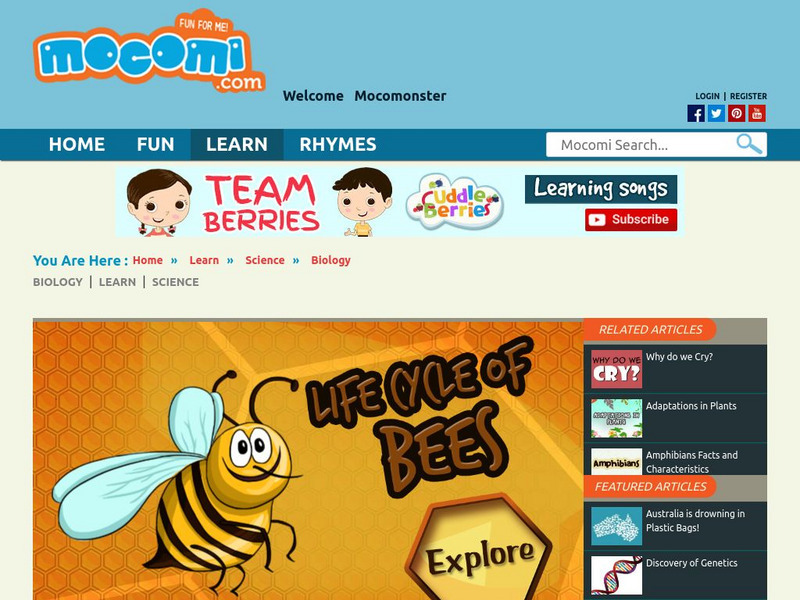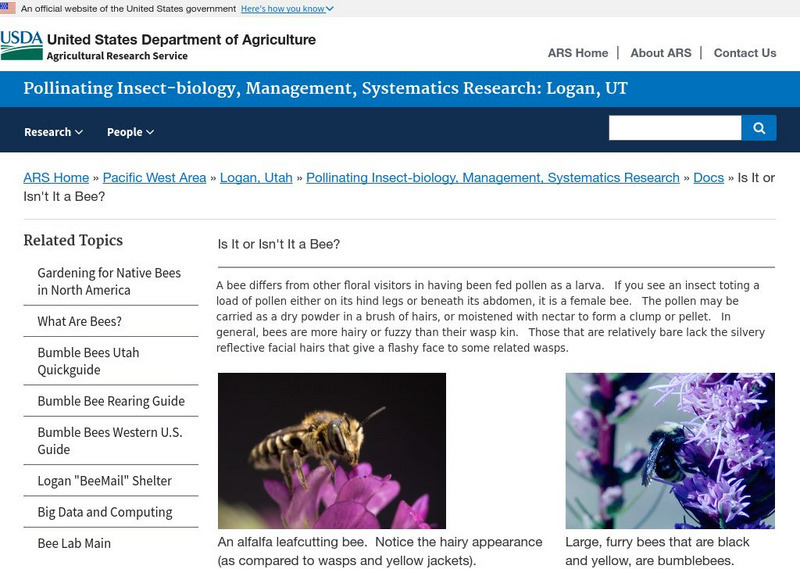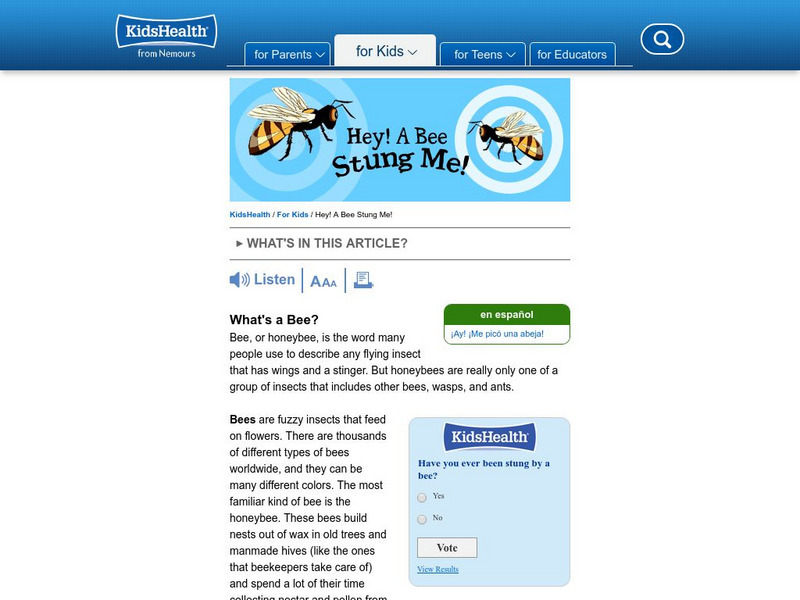Rice University
Rice University: Eusocial Insects
This site, which is provided for by the Rice University, gives a description of the social aspects of the wasp colonies - division of labour.
Michigan Reach Out
Newton's Apple: Why Do Bees Sting?
Lesson plan that explains why bees sting, how bee societies are organized and an activity for students to learn how bees communicate using pheromones.
Smithsonian Institution
Smithsonian Institution: Killer Bees
Description, distribution, damage done, and control are the topics discussed in this concise, informative site.
PBS
Pbs Teachers: Scientific American: Expedition Panama: Bee Lines
Emulate the work of entomologists and explore biodiversity by collecting insects from different sites and keeping records of various populations. Develop a theory about insects and design a way to test it.
PBS
Pbs Teachers: Scientific American: Life's Little Questions: How Do Bees Fly?
Build a simple wind tunnel to help formulate and answer questions about how wind influences animals and plants, and then use it to explore why geese fly in formation and to examine why certain plants do not break in strong winds.
EL Education
El Education: Bee Fore and After Posters
These illustrations of bees were done by third-grade students from Mary O. Pottenger Elementary School in Springfield, Massachusetts. Before they learned anything about bees, students were asked to draw a picture of a bee. At the end of...
Mocomi & Anibrain Digital Technologies
Mocomi: Life Cycle of Bees
Three types of bees are necessary to prevent the bee population from going extinct. Recognize the types and their roles in keeping the bees coming.
Discovery Education
Discovery Education: Plants
The Discovery Channel provides numerous lesson plans dealing with plants. Content is organized by grade level, but all lesson plans include suggestions for adaptations for older or younger audiences.
Canadian Museum of Nature
Canadian Museum of Nature: Bees
Bees are found all over the world and are vital for controlling other insect populations. Some basic facts about bees can be read here, and there are pictures as well.
US Department of Agriculture
Us Department of Agriculture: Is It or Isn't a Bee?
This informative site takes a look at other insects that look like bees but in fact are not. Physical traits and characteristics are commented on for comparison purposes.
Curated OER
Kids Health: Hey! A Bee Bit Me!
At this site from Kids Health you can learn about different types of bees, and where they live. Read about what to expect if you are stung by a bee and what you should do. There are also tips on how to avoid being stung.
Mocomi & Anibrain Digital Technologies
Mocomi: How Do Bees Make Honey?
Investigate how honey bees create the magical sweetener. Why are these bees so important to the environment?
Treehut
Suzy's World: Bees
Use this site to find out why bees make honey with this quick fact sheet on bees.
Other
Maarec: The Colony and Its Organization
Find out about the group behavior of bees in a colony.
Curated OER
Bee
This short article offers an excellent brief discussion of insects with particular focus on bees and ants. Multiple choice and short answer questions follow. Immediate feedback. Printable version available.
Curated OER
Writing Fix: All About Posters: Sunflower Garden
A cartoon image of sunflowers behind a brown picket fense with bees buzzing around them.















